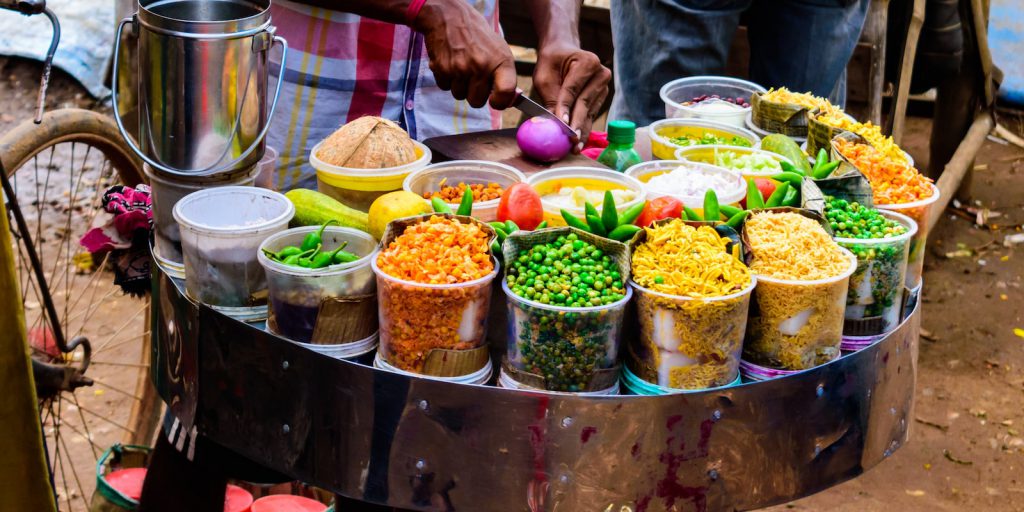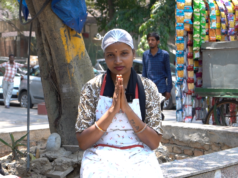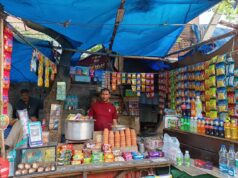Covid-19 has made us pivot to a different style of living, one where we think about whether or not what we’re eating/touching/drinking will infect us with the virus. Though we’re not in lockdown anymore, people are still hesitant to drop by their favourite panipuri stall and this has naturally caused financial problems for street food vendors. In light of this, a first of its kind partnership between the food delivery company Swiggy and the Ministry of Housing and Urban Affairs (MoHUA) PM SVAnidhi scheme has taken shape. What is it, and what does it mean for street vendors and consumers in a post-Covid India?
The foodservice market in India, valued at $65 billion, took a big hit in the initial months of the lockdown. The unorganised street food vendors make up 63% of the total market, valued at $41 billion in revenue. The economic losses for vendors were immense. Data from the National Hawker Federation shows that more than four crore hawkers incurred a whopping Rs 48,960 crores in losses within 36 days of the lockdown. Thus, the MoHUA launched the PM SVAnidhi scheme, providing collateral-free working capital loans of up to Rs. 10,000 to registered street vendors. Close to 2 million applications were received under this scheme, of which over 7 lakh have been sanctioned, and over 2 lakh loans have already been disbursed.
The next step in this scheme’s implementation has been a one-of-a-kind partnership with the food delivery company, Swiggy. In October 2020, MoHUA and Swiggy ran a pilot program for onboarding 250 vendors across five cities – Ahmedabad, Chennai, Delhi, Indore, and Varanasi. The street vendors were helped with PAN and FSSAI registration, training on technology/partner app usage, menu digitization, pricing, hygiene and packaging practices. The pilot was reportedly successful, and now the partnership is moving to its next stage, expanding to 125 cities, with a plan to onboard 36,000 vendors to whom the loan has been disbursed in these cities.
We talked about losses faced by vendors due to the pandemic. Thus by taking street food online, and bringing customers to the vendors in a safe manner, street vendors will get a chance to recover. More than that, this partnership allows the private sector to enter a space which has historically been overregulated – street vending. Though there is almost no data available in the public domain on the pilot project’s results, if it was indeed successful, then Swiggy was able to help onboard 300 vendors in just 3 months. If all of this has happened, that is immense progress.
But, there’s no data available on how well the street vendors were onboarded in the pilot, and on how Swiggy and MoHUA went about achieving those impressive targets. In any case, there are some policy angles that need to be explored before this partnership can be deemed a success.
- Street vendors are daily wage earners. They work on daily profit margins and receiving daily income is key to their survival. Swiggy on the other hand, makes weekly, and not immediate, payments to restaurant partners. Onboarding the street vendors on Swiggy would mean either convincing them to be comfortable with weekly(and not daily) payments or changing Swiggy’s revenue model for specific restaurant partners. Both are significant developments, something that the pilot project does not talk about.
- At present, Swiggy’s commission rates vary anywhere between 18-40% of the order value. Sometimes, the commissions are higher depending on the location and popularity of the restaurant. As a policy, the terms specifying Swiggy’s commission rates in the orders that street vendors get need to be airtight. This percentage should be fixed, and adequate measures should be in place to check for abuse of power by Swiggy.
- Onboarding street vendors does not mean they will stay on the platform and continue using it. Transaction costs of operating on a digital platform like Swiggy are high – maintaining FSSAI standards with regular sanitation, packaging costs etc. Moreover for a street vendor (who usually works alone, or maybe with a helper), selling on Swiggy will mean doing both: using the app on one hand, and cooking and packaging on the other. How practical is that? So, though the pilot tells us how many street vendors were onboarded, it does not provide details on whether the vendors are using it. One solution could be to incentivise them to stay on for longer during the initial onboarding period, with regular tech assistance until they get comfortable.
- Since this project is in partnership with the government, Swiggy will be susceptible to overregulation, particularly because street vending is already heavily regulated by the government. It remains to be seen how tight a leash Swiggy will be on while trying to digitise street food vending.
- On the app, Swiggy has decided to list these businesses as a separate category of “Street Vendors”. Is this demarcation truly the best idea? There has been a drastic change in consumer behaviour due to the pandemic. Online food ordering dropped 70% in the first month of the lockdown, and people are only slowly getting back to ordering online, that too with caution. How many people would actually want to buy from the street vendors category right now?
The success of this programme depends on how well the vendors will be onboarded. The points mentioned above might just be a few in a large pool of unseen consequences that could arise. Though street vendors have had laws protecting them, they have still been harassed and extorted by local authorities. The entry of a private player might make things better, but if the rules of the game remain bureaucratic, we might not see as much progress. For now, a lot of questions remain unanswered, especially from a policy perspective.
Read more: Does Property Rights Help Only the Rich and Powerful?
Post Disclaimer
The opinions expressed in this essay are those of the authors. They do not purport to reflect the opinions or views of CCS.






